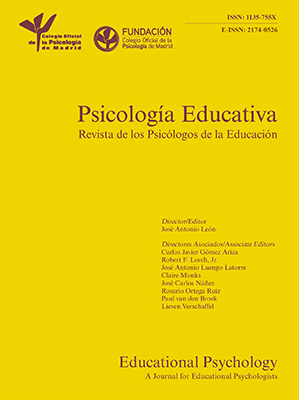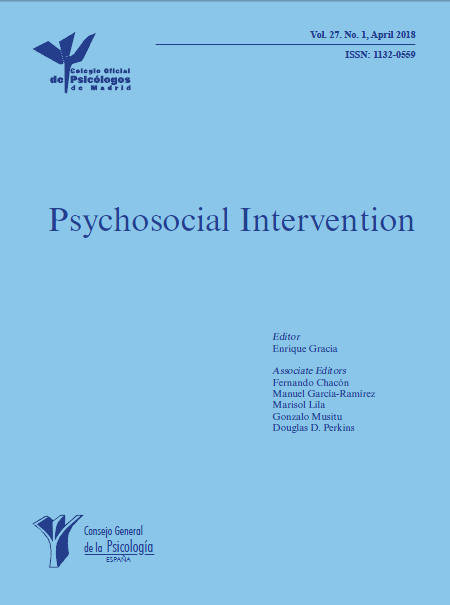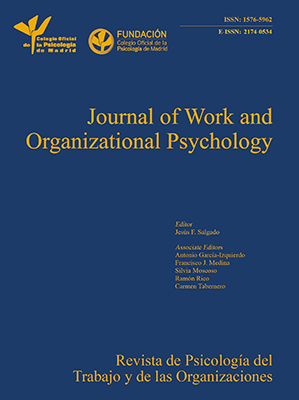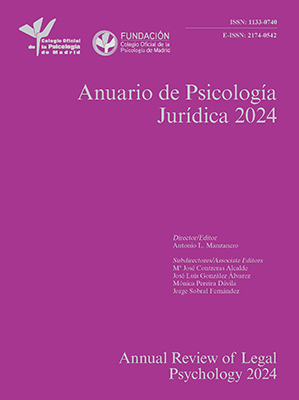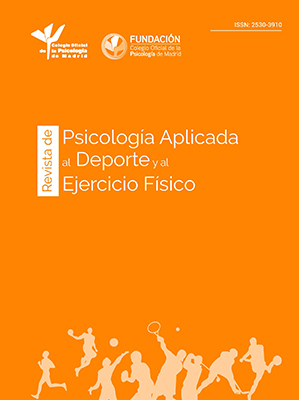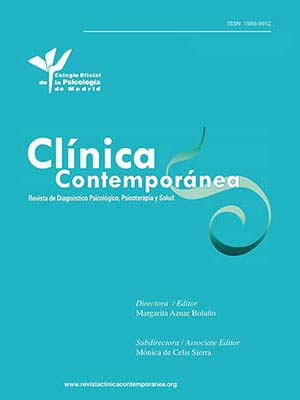
Diagnosis of ADHD in Children with EEG and Machine Learning: Systematic Review and Meta-analysis
[El diagnóstico del TDAH en niños con EEG y el aprendizaje automático: revisión sistemática y metaanálisis]
Catalina Quintero López1, Víctor D. Gil Vera1, and María J. Ruiz Quintero2
1Universidad CatĂłlica Luis AmigĂł, MedellĂn, Colombia; 2Universidad Nacional de Colombia, Colombia
https://doi.org/10.5093/clh2025a16
Received 26 November 2024, Accepted 30 April 2025
Abstract
Background/Objective:ADHD impacts about 5.9% of infant populations worldwide. Its diagnosis is traditionally based on clinical assessment and psychometric test results. Actually, machine learning (ML) has begun to be used to identify various neurodevelopmental conditions, favoring diagnostic accuracy. This research aimed to develop a meta-analysis and systematic literature review (SLR) on the application of ML techniques for the identification of ADHD in children using electroencephalograms (EEG).Method: Using the PRISMA methodology, 30 studies were selected from Scopus and Web of Science (WoS) that met the selection criteria.Results:The most commonly used ML technique was support vector machines. The models evaluated achieved accuracy rates of up to 94.92%, indicating their ability to diagnose ADHD.Conclusions: Predictor variables such as frequency power, neuronal connectivity, and entropy are useful for identifying characteristic patterns in EEG signals, that reflect neuronal dysfunction associated with ADHD.
Resumen
Antecedentes/Objetivo:El TDAH impacta cerca del 5.9% de la población infantil a nivel mundial. Su diagnóstico tradicionalmente se basa en la valoración clínica y resultados de pruebas psicométricas. Actualmente, el aprendizaje automático (ML) ha comenzado a utilizarse para identificar diversas condiciones del neurodesarrollo, favoreciendo la precisión diagnóstica. El objetivo de esta investigación fue realizar un metaanálisis y una revisión sistemática de la literatura científica (RSL) acerca del uso de técnicas de aprendizaje automático para la detección del TDAH en población infantil mediante electroencefalogramas (EEG).Método:Mediante la metodología PRISMA se seleccionaron 30 estudios de Scopus y Web of Science (WoS) que cumplieron con los criterios de selección.Resultados:La técnica de aprendizaje automático más utilizada fue la de máquinas de vectores de soporte. Los modelos evaluados alcanzaron una precisión de hasta el 94.92%, lo que prueba su capacidad para diagnosticar el TDAH.Conclusiones:Variables predictoras como la potencia de frecuencia, la conectividad neuronal y la entropía son útiles para la detección de patrones característicos de las señales del EEG, que reflejan la disfunción neuronal asociada al TDAH.
Palabras clave
Diagnóstico, EEG, Infantes, Aprendizaje automático, TDAHKeywords
Diagnosis, EEG, Children, Machine learning, ADHDCite this article as: López, C. Q., Vera, V. D. G., and Quintero, M. J. R. (2025). Diagnosis of ADHD in Children with EEG and Machine Learning: Systematic Review and Meta-analysis. Clinical and Health, 36(2), 109 - 121. https://doi.org/10.5093/clh2025a16
Correspondence: catalina.quinterolo@amigo.edu.co (C. Quintero López).The attention deficit hyperactive disorder (ADHD) is described as a continuous trend of inattention, impulsivity, and hyperactivity that significantly affects adaptive skills and brain maturation (Vainieri et al., 2023). Inattention manifests itself in distractibility during task performance, failure to follow instructions, difficulty maintaining concentration, and disorganization. Hyperactivity includes excessive motor activity and behaviors such as running, climbing, or excessive talking, while impulsivity refers to rash actions without considering consequences, such as interrupting people or making unexpected decisions. This condition has a multifactorial etiology, encompassing genetic, neurobiological and environmental components. The heritability of ADHD is estimated at 74% (Uchida et al., 2023). Genetic studies performed with DNA sequencing have identified polymorphisms in some genes (ADGRL3, DRD4, SNAP25) (Cervantes-Henriquez et al., 2022). Factors such as low birth weight, gestational exposure to tobacco and neurotoxins are predisposing to this clinical condition (American Psychiatric Association [APA, 2021]). The detection of ADHD in children is a difficult task for health specialists due to the diversity of its symptoms and the high comorbidity with other neurodevelopmental, emotional and behavioral psychopathologies (Elwin et al., 2020). This nosology affects approximately 5.9% of the child population worldwide, marking the need for accurate and objective diagnostic methods (Al-Wardat et al., 2024). Traditional procedures are based on psychometric scales and clinical examinations that may vary among professionals, assessment centers, methodologies employed and individual criteria of specialists, which detracts from objectivity (Vahid et al., 2019). This variability and diagnostic subjectivity have led the scientific community to explore new methods that offer greater accuracy (Z. S. Chen et al., 2022). One of the technologies that is beginning to emerge in this field is ML applied to EEG analysis, which is a neurophysiological tool that captures brain electrical activation and provides precise temporal resolution, making it suitable for evaluating and diagnosing children with ADHD (Parashar et al., 2021). Research has reported that minors with this condition present different brain activity patterns compared to peers without this nosology (Cortese et al., 2021; Michelini et al., 2022). These can be captured and analyzed through the application of procedural signal methods and ML algorithms, constituting a diagnostic alternative (Parlatini et al., 2024). Some ML predictive models such as decision trees (DT), logistic regression (LR), support vector machines (SVM), and random forests (RF), have been used to classify and predict the presence of ADHD in children. Moreover, artificial neural networks (ANN) and k-nearest neighbors (k-NN) have proven effective in determining complex EEG parameters, which improves diagnostic accuracy, tools that overcome the limitations of conventional methods (Kautzky et al., 2020; Rostami et al., 2020). Predictor variables such as frequency power, neuronal connectivity and entropy have allowed ML models to identify characteristic patterns in EEG signals associated with ADHD. Alpha (α) and beta (β) waves have been useful in differentiating minors with ADHD from typical control groups by analyzing nonlinear, ANN and SVM signals (Alam et al., 2022). Neural connectivity, which assesses the interaction between different brain regions, and entropy, which measures the complexity or disorder of signals, reflect neural dysfunctions associated with ADHD. The highest predictive sensitivity has been observed in right hemisphere channels, indicating the importance of brain lateralization in the detection of ADHD and suggesting that differences in regional brain activity are an indicator of this disorder (Zou & Yang, 2021). This research aimed to perform a meta-analysis and an SLR on the use of ML techniques for the diagnosis of ADHD in children using EEG. The research question guiding the analysis was: “How has ML with EEG been used to detect ADHD in children?”. The use of ML in the EEG study not only improves the accuracy of ADHD detection but also facilitates a more objective and reliable assessment, overcoming the limitations of conventional methods, which could boost the integration of these tools in clinical practice. Search Strategies This study analyzed research that used ML models to predict ADHD in children. The variables were: ADHD diagnosis (target) and EEG-derived data (predictors). The guidelines for the systematic review and meta-analysis were developed and managed with CADIMA Centro Leibniz de Investigación del Paisaje agrícula [ZALF, 2024]. The methodology followed PRISMA guidelines (Page et al., 2021). The WoS and Scopus repositories were used to track publications, with a viewing window from January 2012 to July 2024. Research applying ML techniques to the analysis of EEG signals for the diagnosis of ADHD began to be published in 2012. There were no language or subject area restrictions in the study. Some of the disciplines included were medicine, neuroscience, computer science, engineering, psychology, genetics, social sciences, biological engineering and molecular biology. The Medical Subject Headings (MeSH) (National Library of Medicine, 1960) were used to identify appropriate search terms. The exploration was performed by an expert group in neuroscience and engineering. The equation used in Scopus (TITLE-ABS-KEY) and WoS (All Fields) is presented below. Scopus (26) TITLE-ABS-KEY (“ADHD” OR “Attention Deficit Hyperactivity Disorder” AND “Machine Learning” AND “Children” AND “EEG”) AND PUBYEAR > 2011 AND PUBYEAR < 2025 AND (LIMIT-TO (OA, “all”)) WoS (47) “ADHD” OR “Attention Deficit Hyperactivity Disorder” AND “Machine Learning” AND “Children” AND “EEG” (Topic) Eligibility Criteria To minimize bias in the publications included in the meta-analysis and SLR, precise and rigorous inclusion criteria were established: (1) empirical and structured studies, (2) focused on the diagnosis of ADHD with ML in children, (3) using EEG data as predictor variables, (4) employing training and validation samples, (5) using ML-specific metrics to assess model performance, (6) open access publications. Exclusion criteria were: (1) studies in adults, (2) without data standardization, (3) literature reviews, single cases, memoirs, monographs or technical manuals, (4) studies with data from psychometric testing, spectrograms, genetic data, MRIs actigraphy, accelerometer or virtual reality, (5) no age reporting of sample groups, (6) ADHD with comorbidities or associated with genetic syndromes, (7) unsupervised learning ML models, (8) with Accuracy less than 65%. Data Collection, Data Analysis, and Bias Assessment Two reviewers independently assessed the title and abstract according to the established eligibility criteria. Any disagreement was discussed with the third reviewer and resolved by consensus. An adapted checklist designed to ensure that the selected publications were relevant to the object of study of this SLR was used (Mohamed Shaffril et al., 2021). The checklist included: (a) study design, with a description of the problem statement and the inclusion requirements of the research units; (b) construction of the ML predictive models that contemplated the same target variable; (c) analysis of results, focusing on model performance, description of statistics, and conclusions; and (d) interpretation with generalization of findings, limitations, and formulation of new hypotheses. Initially, 28 publications were identified in Scopus and 39 in WoS, totaling 67; 15 duplicates were eliminated from the two search engines, leaving 52 publications in total. The three reviewers considered 30 studies that met the eligibility criteria adequate and discarded 22 for the following reasons: (1) studies in adults: 6, (2) no data standardization: 0, (3) literature reviews, single cases, memoirs, monographs, meta-analyses or technical manuals: 5, (4) studies with psychometric test data, spectrograms, genetic data, MRI, actigraphy, accelerometer or virtual reality: 2, (5) ADHD with comorbidities or associated with genetic syndromes: 4, (6) without reporting age of sample groups: 1, (7) unsupervised learning ML models: 3, and (8) with precision (accuracy) less than 0. 65: 1. Twenty-six articles were included in the meta-analysis that reported the complete metrics of the optimal ML model: Accuracy, Sensitivity (Detection) and Specificity (Exclusion). Four articles were eliminated that, although reporting accuracy, did not include sensitivity (2) or specificity (4). Figure 1 presents the PRISMA flowchart (Page et al., 2021). Organization of Selected Publications The sample groups, age of participants, ML models, performance metrics, validation, EEG waveforms and evaluated condition (cognitive task, closed eye and open eye) of the 30 selected publications are presented in Table 1. The order of tabulation of the studies was assigned according to the ML model constructed: SVM models appear first (9), followed by CNNs (4), ANNs (2), k-NNs (2) and Naïve Bayes (2). In Table 1, starting from row 20, 11 articles are reported that employ different techniques: K2 Bayesian networks (1), ConvMixer-ECA (1), eXtreme Gradient Boosting (XGB) (1), Explainable Boosting Machine (EBM) (1), Gaussian Process with Radial Basis Kernel (GF-RBF) (1), Generalized Linear Model (GLM) (1), Sparse Non-Negative Least-Square coding (SNNLSC) (1), Monte Carlo Simulation (1), Bagged Tree (BT) (1), CatBoost (1) and Random Forest (RF) (1). From the 30 selected studies, we extracted data reported in Table 1, (1) the citation of each study, (2) the sample size, (3) the age of the participants, (4) the optimal ML model, (5) the scores of the performance metrics, (6) the type of validation employed, (7) the waves and frequencies in Hertz observed in the conditions: cognitive task, eyes closed and eyes open; the findings presented under these three conditions correspond to specific characteristics of the EEGs of the experimental group (ADHD). Table 1 Selected Research   Note. ADHD-C = ADHD combined; PLI = phase lag index; PLV = phase locking value; δ = delta wave; θ = theta wave; α = alpha Wave; β = beta wave; γ = gamma wave; CV = cross validation; EC = eye closed; EO = eye open; CNN = convolutional neural network; MLP = multi-layer perceptron; kNN = k-nearest neighbor; BD = behavioral disorder; EBM = explainable boosting machine; SVM = support vector machine; SD = standard deviation; CPT = continuous performance test; K-CPT = Kiddie continuous performance test; RNN = recurrent neural network; C-SVM = cubic support vector machine; LOOCV = leave-one-out vross-balidation; CRP = cross recurrence plots; RQA = recurrence quantification analysis; GP-RBF = Gaussian process-radial base kernel (RBF); IVA-CPT = integrated visual and auditory continuous performance test; FFT = fast Fourier transform; O2 = electrode located in the right occipital region of the brain; Cz = electrode situated in the central part of the scalp in the midline of the scalp; GLM = generalized linear model; NR = does not report; VCPT = visual continuous performance test; SNNLSC = sparse non-negative least-square coding; BT = bagged tree; BSFS = backward stepwise feature selection; RF= random forest. Qualitative Analysis From the selected research, it was identified that the applying of ML for the diagnosis of ADHD with EEG has increased in recent years. Although the first papers date back to 2012, it was not until 2023 that this trend began to consolidate. In 2017 there was one publication, and in 2018 two. Interest increased in 2019 with three publications, and in 2020 it remained at two. In the following years, there were fluctuations, with ten publications, marking the importance of strengthening the use of ML for this diagnosis. In 2024, there were five publications, reflecting a sustained interest in this area of research (Peterson et al., 2024). Of the 30 publications chosen, sample groups ranged from 10 to 135 participants. Appropriate sample size is critical for training ML models; external validation studies with insufficient sample sizes may yield inaccurate estimates of model efficacy, affecting calibration, discrimination and clinical utility. Studies should include at least 100 cases to ensure accurate validation (Riley et al., 2021). The diagnosis of ADHD requires identifying the three clinical presentations (inattentive, hyperactive-impulsive or combined). Only four of the papers reported ADHD presentation in their analyses (Bashiri et al., 2017; Chen, Chen, et al., 2019; Li et al., 2023) and 28 studies included clinical groups (ADHD) and healthy controls. The inclusion of a control group allows reliable comparisons between minors with ADHD and those with normal development and provides a baseline to assess differences in cognitive and neurophysiological metrics (Zhao et al., 2020). Regarding sex information, 16 studies mentioned the distribution between girls and boys (Alkahtani et al., 2023; Feng & Xu, 2024; Karabiber Cura et al., 2023). Previous studies have highlighted that minor girls with ADHD are often diagnosed later than minors boys, due to the prevalence of emotional clinical manifestations that often hinder the identification of ADHD symptoms. Referring to gender is important, because of differences in clinical presentation and symptomatology that influence diagnosis and appropriate treatment (Klefsjö et al., 2020; Mayes et al., 2020). The modal age range in the selected publications was 7 to 12 years, which coincides with studies indicating that it is in this period when ADHD symptoms become more evident, cease to be masked and begin to generate difficulties in the family and school context (Espinet et al., 2022; Rocco et al., 2021). SVMs were employed in nine studies to accurately classify ADHD diagnoses, process large volumes of data and create decision boundaries in high-dimensional spaces (Pisner & Schnyer, 2020). This technique has shown high levels of sensitivity and specificity in differentiating between minors with ADHD and those with normal neurodevelopment, which can address the heterogeneity of ADHD symptoms. However, SVMs are at risk of overfitting when the number of features is high compared to sample sizes, making interpretation difficult (Bledsoe et al., 2020). In four studies employing CNNs, they showed an average accuracy (Accuracy) of 96.24%, outperforming other ML models, such as ANNs and k-NNs (Mafi & Radfar, 2022; Moghaddari et al., 2020; TaghiBeyglou et al., 2022). Unlike SVMs, which require manual feature selection and may be limited by data linearity, CNNs can capture more complex relationships by processing EEG data into time-frequency representations without prior feature engineering; this reduces the risk of bias and optimizes diagnostic accuracy (Chen, Song et al., 2019). Cross-validation (k-fold) is one of the methods to assess the performance of ML models (Ramezan et al., 2019). Validation with 10 layers (k = 10) was employed in thirteen of the selected studies, i.e., the data were divided into 10 subsets. They were trained with nine of them and validated with the remaining ones, reiterating this process 10 times to ensure that each subset is taken up for validation at least once (Alim & Imtiaz, 2023; Attallah, 2024; Muthuraman et al., 2019). This method allows the accuracy of the model to be evaluated robustly and avoids problems with overfitting, diagnostic reliability is increased (Chen, Chen, et al., 2019; Moghaddari et al., 2020). In eleven investigations, a validation with 5 layers (k = 5) was used, where the data is classified into 5 fragments, although this approach reduces the number of partitions, it allows a proper evaluation of the model performance, with lower granularity compared to that of 10 layers (Abibullaev & An, 2012; Alsharif et al., 2024; Li et al., 2023). The purpose of the layers is to reduce bias and variance in the model results and ensure that new data are generalized (Lei, 2019). In 22 of the selected studies, different wave frequencies (δ, θ, α, β, γ) were used to evaluate eyes closed (EC), eyes open (EO), and cognitive task conditions in experimental groups (ADHD) to analyze the neurophysiological responses under each condition (Ahire et al., 2023; Alkahtani et al., 2023; Maniruzzaman et al., 2023). EEG is a noninvasive monitoring method that detects brain electrical impulses through electrodes placed on the scalp (Abdulwahab et al., 2020). During the OC condition the infants in the experimental group (ADHD), presented an increase in theta (θ) waves and a decrease in beta (β) waves, which contrasts with the typical pattern of brain relaxation and synchronization observed in typically developing infants (Alkahtani et al., 2023). In the EO condition, it was found that in ADHD there are elevated levels of hyper-coherence in beta (β) frequencies, suggesting excessive activity in areas responsible for visual attention and external information processing, reflecting rigidity in response to visual stimuli (Deshmukh et al., 2024; Kerson et al., 2023). In the cognitive task condition, selected investigations used tests of visual attention and found that infants with ADHD present pronounced activation in the alpha wave (α = 8-12 Hz), suggesting increased distractibility and extra effort for attentional sustainment. Increased theta wave (θ) power was evident, indicating difficulty in maintaining concentration when confronted with visual stimuli. The elevated theta-to-beta (θ/β) ratio in these children shows an altered neural balance, hindering the ability to focus and process information (Abibullaev & An, 2012; Öztoprak et al., 2017; TaghiBeyglou et al., 2022). Meta-analysis To perform the meta-analysis, the accuracy, specificity and sensitivity metrics of the selected papers were used. The analysis was developed in Python (Python Software Foundation, 2023, version 3.12’) (Appendix). First, the data from the 26 studies that recorded the three metrics were entered into the software. Second, the values of the descriptive statistics for each measure were obtained, see Table 2. Table 2 Descriptive Statistics   Note. SD = standard deviation; Min. = minimum; Max. = maximum; ACC = accuracy; SN = sensitivity; SP = specificity. Third, a “Forest Plot” diagram was developed to visualize the confidence intervals of the averaged metrics (accuracy, sensitivity, specificity) from the studies and to analyze the variability (Figure 2). An interval plot is a graphical representation commonly used in meta-analysis to visualize the findings of multiple investigations, the black dot on the line indicating the value of the metric analyzed. Longer horizontal lines indicate greater uncertainty in the estimate of effect (specificity) (Dettori et al., 2021). Most of the articles have an accuracy > 94%, a sensitivity > 94% and a specificity > 92%, which allows us to conclude that the studies analyzed perform well in terms of accuracy, sensitivity and specificity, see Figure 2. Table 3 presents the results of the pooled effect and heterogeneity. The pooled effect represents the weighted average of the individual studies (Paul & Barari, 2022). The pooled values for accuracy, sensitivity, and specificity were 98%, 95%, and 96%, respectively, indicating good performance. To measure the heterogeneity of the studies, we used the descriptive Q (Equation 1). A value of Q = 0.00 means no variation among the studies, i.e., they are completely homogeneous. The average effect was obtained from the mean weighted by the inverse of the variance of the effect of each study (Equation 1) (Huedo-Medina et al., 2006). Where: -θ is the overall pooled effect estimate, calculated by (Equation 2): To calculate the percentage (%) of variability between studies attributed to heterogeneity, the I² statistic was used (Equation 3). This indicates the percentage of total variability due to between-study heterogeneity (Stogiannis et al., 2024). An I² of 0.00% suggests no heterogeneity, i.e., the studies are consistent. Where: - Q is the heterogeneity statistic previously calculated. - k is the total number of studies included in the meta-analysis. - An I² of 0.00% suggests that there is no heterogeneity, meaning that the studies are consistent The p-value for the Q statistic is obtained from the chi-square statistic, with 25 degrees of freedom (n-1). A p-value of 1 indicates that there is no evidence of significant heterogeneity between studies. The absence of heterogeneity (Q = 0.00, I² = 0.00%) shows that the individual studies analyzed are highly consistent, which is generally positive because it suggests that the results are reliable and generally applicable. The heterogeneity analysis revealed that the studies included in the meta-analysis were highly consistent, with Q = 0.00 and I² = 0.00%, indicating no significant variability among the estimated effects. A fixed-effect statistical model was used for the pooled result, all studies shared the same true effect and the differences observed were due exclusively to sampling error. The fixed-effects model in meta-analysis assumes that all studies share the same true value of the estimated parameter, so any observed variability is due solely to sampling error (Barili et al., 2018; Borenstein et al., 2010). This approach assigns greater weight to studies with lower variance and is appropriate when heterogeneity is minimal (I² close to 0%), such as in this work This decision implies that the results obtained are generalizable only to the set of studies analyzed and to populations with similar methodological characteristics. In contrast, a random-effects model, which considers that the studies represent a sample drawn from a larger population with variability among them, was not necessary because of the homogeneity observed. From a conceptual perspective, the homogeneity among the included studies is justified by the use of comparable methodologies in predicting ADHD with EEG data and machine learning models, employing consistent metrics such as accuracy, sensitivity, and specificity. These factors reinforce the robustness of the results and their validity within the frame of reference defined by the meta-analysis. The findings of the meta-analysis indicate that ML techniques applied to the diagnosis of ADHD using EEG are effective and reliable as complementary tools in the clinical setting (Appendix). The use of SVM to analyze EEG is an effective model for diagnosing ADHD (Alim & Imtiaz, 2023; Alsharif et al., 2024; Muthuraman et al., 2019). The nine selected articles with this technique refer a pattern of increased theta (θ) activity and decreased beta (β) activity, (Attallah, 2024; Li et al., 2023; Öztoprak et al., 2017). These findings indicate cortical hyperactivity accompanied by reduced inhibition, and symptomatology that is characteristic of ADHD (Alsharif et al., 2024; Chen, Chen, et al., 2019; Maniruzzaman et al., 2022). Research using principal component analysis (PCA) in combination with SVM for the diagnosis of ADHD reports several cognitive and neuroanatomical alterations. Deficits in attentional processing and inhibitory control are evident (Alsharif et al., 2024). Problems in emotional regulation and sustained attention capacity have also been identified, associated with dysfunctions in frontal areas (Alim & Imtiaz, 2023). The features selected by PCA allowed the identification of less efficient neural processing in attention tasks (Maniruzzaman et al., 2022). Differences in neural spatial encoding were detected during cognitive tasks, suggesting altered processing in ADHD children (Li et al., 2023). Finally, it is noted that dimensionality reduction facilitates better-capturing alterations in cortical coordination during attention tasks (Attallah, 2024). Research using CNN indicates that this technique can capture complex and nonlinear patterns of neural connectivity. Thanks to their layered structure, they identify spatial and temporal relationships between different brain regions through automatic extraction of relevant features, which increases diagnostic accuracy (Moghaddari et al., 2020; TaghiBeyglou et al., 2022). CNNs highlight specific spatiotemporal differences between children with ADHD and healthy controls (Chen, Chen, et al., 2019). One paper reported specific patterns of altered connectivity between the prefrontal lobe, parietal cortex, and motor regions, structures involved in executive functionality, attentional regulation, and impulsivity. In children with ADHD, these areas showed decreased synchronization and coherence, indicating dysfunction in neural communication between structures responsible for cognitive processing and behavioral regulation (Mafi & Radfar, 2022). Moghaddari et al. (2020) transformed EEG signals into RGB images in three channels (red/green/blue), representing a frequency band of brain activity: theta (θ), alpha (α), and beta (β)/gamma (γ). This method allowed visualizing particularities in the brain activation of minors with ADHD, reporting increased activity in the theta (θ) band and a reduction in the beta (β) band, reflecting difficulties in regulating attentional and cognitive processes. Similar findings were reported in the research of TaghiBeyglou et al. (2022), in which an increase in theta (θ) band activation and a decrease in the beta (β) band were detected, indicating a neuronal imbalance associated with attention and impulse control. In addition, deficits were observed in the connections between frontal and parietal regions, areas responsible for executive control. The selected publications that employed RNA indicate reduced cortical activity in frontocentral areas, with increased power in delta (γ) and theta (θ), and an elevated delta (γ)/beta (β) ratio, while reduced alpha(α) and beta (β) activation was observed, especially in posterior regions. These alterations are associated with deficits in attention, response control, and impulsivity, which are the main symptoms of ADHD. Studies posit the frontal cortex as the most affected region in ADHD, with reduced amplitudes and prolonged latencies in P300 potential responses, which indicates reduced complexity in electrical brain activity (Altınkaynak et al., 2020; Bashiri et al., 2018). Consistent in the articles analyzed is the report of alterations in theta (θ) and beta (β) waves, reflecting problems in attention and cognitive processing (Ghaderyan et al., 2022; Kerson et al., 2023). Similarly, Naive Bayes models have referred to modifications in theta (θ) and alpha (α) waves, signaling alterations in executive functioning and attention (Ahire et al., 2023; Chauhan & Choi, 2023). More complex models such as eXtreme Gradient Boosting (XGB) and ConvMixer-ECA have indicated changes in delta (δ) and gamma (γ) wave activity, which are associated with altered cortical inhibition and increased cognitive effort (C. C. Chen et al., 2023; Feng & Xu, 2024). Techniques such as GP-RBF and Bayesian Networks point to marked differences in frontal cortex activity, suggesting difficulties in executive function, evidenced by increased theta (θ) and delta (δ) activation, and decreased beta (β) and alpha (α) waves (Maniruzzaman et al., 2023; Pereda et al., 2018). Several studies found a decrease in beta (β) wave activity during cognitively demanding tasks, reflecting deficits in executive control and response inhibition, a characteristic of ADHD infants with this condition avoid activities that involve mental effort (Alkahtani et al., 2023; Khare & Acharya, 2023). Functional disconnection between frontal and parietal regions has been reported as a common finding, in several publications, a condition that affects the neural networks responsible for attention and inhibitory control, which contributes to the cognitive dysfunction observed in this clinical condition (Ahire et al., 2024; Tor et al., 2021). In terms of cognitive processing, deficits in working memory and attentional cognition were identified reflected in the reduction of the amplitude of the P300 component during the performance of cognitive tasks. This pattern suggests impaired information processing in minors with ADHD (Altınkaynak et al., 2020; Bashiri et al., 2018; Deshmukh et al., 2024). Other research shows discrepancies in the alpha (α) and gamma (γ) bands, especially as a function of the cognitive task used (Ahire et al., 2024; Ghasemi et al., 2022). These variations could be related to the diversity of cognitive tests employed, ranging from visual attention tasks to time playback tests, resulting in differences in brain activation patterns (Karabiber Cura et al., 2023). Conclusions ML techniques are effective in classifying ADHD in infants by analyzing EEG data. The analyzed models achieved significant accuracy rates (94.92%), indicating that they can capture distinctive neural patterns associated with this clinical condition. This favors diagnostic accuracy compared to traditional clinical methods. The papers included in the SLR reported that theta (θ) waves and beta (β) waves are predominant in EEG analysis for the detection of ADHD. In this population, increased theta (θ) wave activation has been observed, associated with distractibility and inattention. Beta (β) waves, related to cognitive activity and focus, show a reduction, which reflects a deficit to control responses and maintain concentration for a prolonged period. The main limitations of the analyzed publications include the small size of the different sample groups, which could compromise the extrapolation of the findings to the global population. Most of the articles do not classify ADHD according to its presentations (inattentive, impulsive/hyperactive or combined), which affects diagnostic accuracy. Another limitation is that not all research reports sex (boys/girls) when making classifications, which biases the results. The findings have not been tested in practical settings, which reduces direct applicability to the clinical setting. Future work could focus on the integration of multimodal data such as EEG, MRI, behavioral and neuropsychological data, to generate an accurate and precise diagnosis of ADHD. Conflict of Interest The authors of this article declare no conflict of interest. Acknowledgment PhD in Applied Neuroscience and Behavior, Universidad San Buenaventura Bogotá. Cite this article as: Quintero López, C., D. Gil Vera, V., & Ruiz Quintero, M. J. (2025). Diagnosis of ADHD in children with EEG and machine learning: Systematic review and meta-analysis. Clinical and Health , 36(2), 109-121. https://doi.org/10.5093/clh2025a16 Funding Luis Amigó Catholic University, Cost Center 05020299152, Research Project “Design of a predictive model of attention deficit-hyperactivity disorder.” References Appendix Python Code. Description: https://github.com/victorgil777/EEG_ML/blob/main/Appendix%201 |
Cite this article as: López, C. Q., Vera, V. D. G., and Quintero, M. J. R. (2025). Diagnosis of ADHD in Children with EEG and Machine Learning: Systematic Review and Meta-analysis. Clinical and Health, 36(2), 109 - 121. https://doi.org/10.5093/clh2025a16
Correspondence: catalina.quinterolo@amigo.edu.co (C. Quintero López).Copyright © 2026. Colegio Oficial de la Psicología de Madrid











 e-PUB
e-PUB CrossRef
CrossRef JATS
JATS

